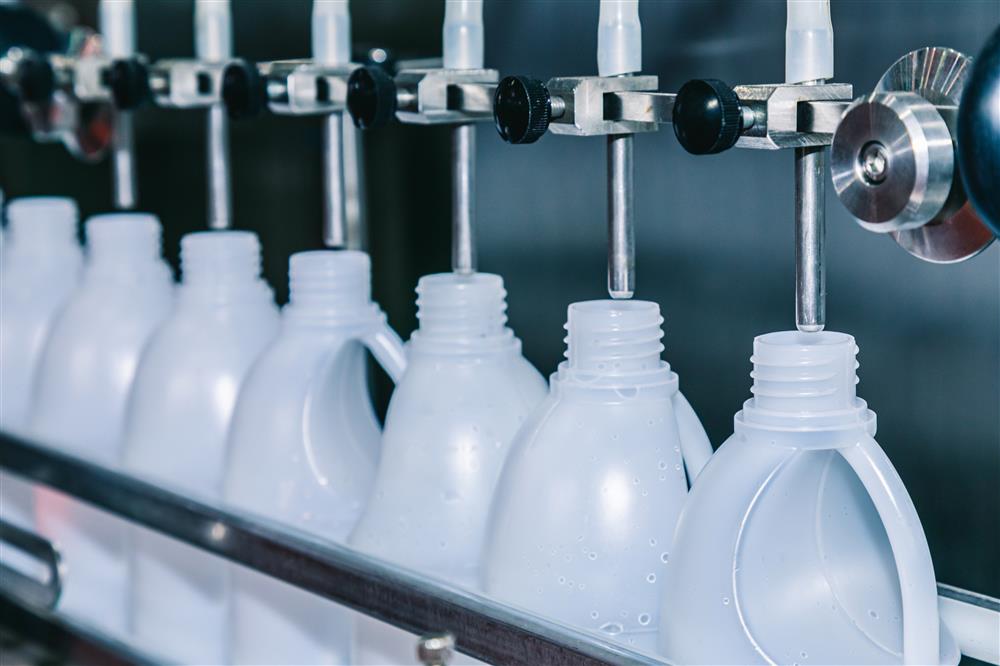A few preventative measures can make a massive difference for your packaging. Anytime you have a new combination of plastic and product, there is a chance that those two won’t work well together. For example, a fuel additive only works well with certain resins.
This situation can pose a major problem. An adverse chemical reaction between your fill products and container of choice is a costly situation. Fortunately, compatibility and stability testing can help you ensure that your products and packaging are a perfect fit.
Compatibility Testing Process for Plastic Containers
There are two phases to the testing process:
- Safety data sheet (SDS) review
- Product tests
Safety data sheet (SDS) review
In the first phase, experts will look at the SDS and review the properties of your fill product. This document lists the active chemicals that make up that product. That information is then used to dictate how the fill product should be shipped and treated during a fire. For compatibility and stability testing, the SDS also provides key details to help experts compare the active chemicals to various available resins.
By evaluating the active substances in a fill product, packaging experts can identify which kind of plastics work well with those chemicals. It can also help indicate if certain fill products are sensitive to oxygen. These products would require a nitrogen flush or some other head space treatment to prevent hardening, curdling, darkening, or some other reaction. The SDS may be enough information to determine a solution based on your fill product, but you should move on to the next phase of testing if a clear-cut answer isn’t readily available.
Compatibility and stability tests
The next step of the process involves filling your potential container and heating them in a testing oven. The filled containers are tested at different temperatures over time – typically either a long time at a lower heat or short duration (typically 14 days at 140 °F per CFR 49, Appendix B – Part 173) at a high temperature. This method will usually accelerate any kind of reaction you’d get between incompatible products and plastics.
If the two aren’t compatible, you’ll be able to spot signs of paneling. The plastic will soften and the chemicals in your product will leech out through the bottle wall on a molecular basis. Not only can this cause your product to give off fumes, but also create a vacuum within the bottle. As you lose that volume of chemical inside, the negative pressure will cause the sides of your container to suck in and deform the bottle. If there aren’t any adverse signs, then your fill product and choice of bottle resin should be ready for the next set of final distribution testing (e.g. shock & vibration, environment stress cracking (ESC), compression, etc.).
Why You Should Test Your Plastic Packaging
There’s one major reason why you should test your plastic packaging for product compatibility and stability: it can save you a whole lot of money.
If you don’t test your products and packaging, only time will tell if they’re incompatible. Issues can start during shipping and storage, especially if excess heat cause early evaporation or bottle deformity. These problems can still occur even in climate-controlled conditions – a few weeks on the shelf may be all it takes for bottle paneling to warp your containers if a incompatible plastic was used.
Regardless of when paneling, fumes, or other issues occur, they all make your products look bad. Consumers won’t risk buying any bottles that appear damaged, leak, or smell on the shelf. In addition, retailers can and will send back a whole truckload of your products if they notice paneling – no big box store or retailer is going to spend time sorting out problem bottles when they can simply get a new shipment.
Even if your bottles don’t display any issues until they’re on shelves or in buyers’ homes, this scenario is still bad for business. If you run thousands of bottles and your product turns colors after a month, that’s a problem. Consumers will remember these issues and may damage your brand and simply opt for a competitor. Testing gives you the chance to head off any problems before you commit to packaging.
It’s also important to note that testing should also be done if you change some element of your product and packaging. Even if you’ve undergone testing before, different ingredients or resins can affect the compatibility and stability of your products and containers. In this case, it’s best to conduct new tests. If your containers and fill products haven’t changed since the last tests, you should be all set.
Invest in Compatible Packaging for Your Products
Product loss is a serious issue for any business. With proper testing and a good packaging supplier, you can avoid unnecessary issues and identify the right packaging solution for your business.
If you’ve had issues with paneling or other compatibility concerns, we can help. Our team can work with you to uncover available packaging solutions for your products and test them to make sure you’re set for the future. Contact us today to talk to one of our experts about your packaging needs.


